Eileen Neff
Lawrence Oliver Gallery, 1990
Sometimes the world can look completely familiar and completely strange: sometimes when we think about it, things exist in a more intense way inside memory and desire. But memory is a cluttered room in which we can never find what we are looking for. Often what we come upon there is something completely unexpected, a half forgotten desire, a color, smell, a whiff of the sea. Eileen Neff's image/objects act like the image/objects of memory itself. They are intense, a condensation. They exist in this uncanny space because her work creates around itself the void through which desire projects itself.
Turning a corner, we come upon a floating couch, an empty chair, water fragmented into different shades of gray, a brilliant red is held together by a heavy gilt frame, a piece of sod appears on top of a dresser. A tabletop becomes a kind of peephole into a painted landscape. Flattened out, Neff's floating furniture evokes a sort of interiority immune to gravity. Her interiors are like apertures on a new kind of landscape; her windows on the outside world reveal not so much a panorama of freedom as the flattening out of possibility. Our representations of objects and topographies have become increasingly claustrophobic, airless and confining: in fact, the Occidental representation of nature has allowed us to try to domesticate it by stripping it of its particularity. Neff is able to illustrate our unconscious relationship to the world and to nature by juxtaposing familiar objects and images in unfamiliar ways.
A Description of the World (1989) is poetic testimony to the ways in which embedded in the every quotidian particular, a relationship of intense projection and transference exists with the abstract, the general, the global. The bottom of the earth glows with a light that seems to be shining from the table. What is being described here is a Copernican revolution of the particular. No, the world does not revolve around us, but it does indeed glow with the intensity of our desire.
International Forest (1990) is a piece in which photographic paper is endowed with the almost magical quality of the texture of bark. Neff prints the texture of countless trees onto paper and then tears the paper into card-size pieces and arranges them on a metal stand. The photographic graininess and the actual images of the bark themselves combine to create an overwhelming, hallucinatory effect. This work is a celebration of the infinite variation of the natural, as well as being a subtle, lyrical comment on the way that variety is catalogued and packaged. The rich red pigment in the piece Table Dirt (1990) is sensuously disarming as the looseness of the material stands in direct contrast to the clean edges of the graceful table. Neff manages to take the exteriorized world, the photographs of the sea, the sod that lies on a ledge above a painted photo of a dresser, and use them to create new aesthetic effects without sentimentality or nostalgia. Nevertheless, the water and bark images are imprinted with an aura of memory and desire.
The body slips through Neff's work, invisible, and ghostly, The human form slips off her chair, through the different shades of water, into the rooms filled with floating furniture. The human peeks through tables and sees landscapes, opens drawers to find blocks of color, runs its fingers through dirt on a table. These image/objects seem to have a life of their own; animated by the gaze of the artist, they have stories to tell. These objects are ghosts of themselves. They are moving insofar as they look forgotten and abandoned by a supernatural agency. They speak of the discontinuities of presence as they evoke, in their lyricism, the poetics of absence.
Catherine Liu
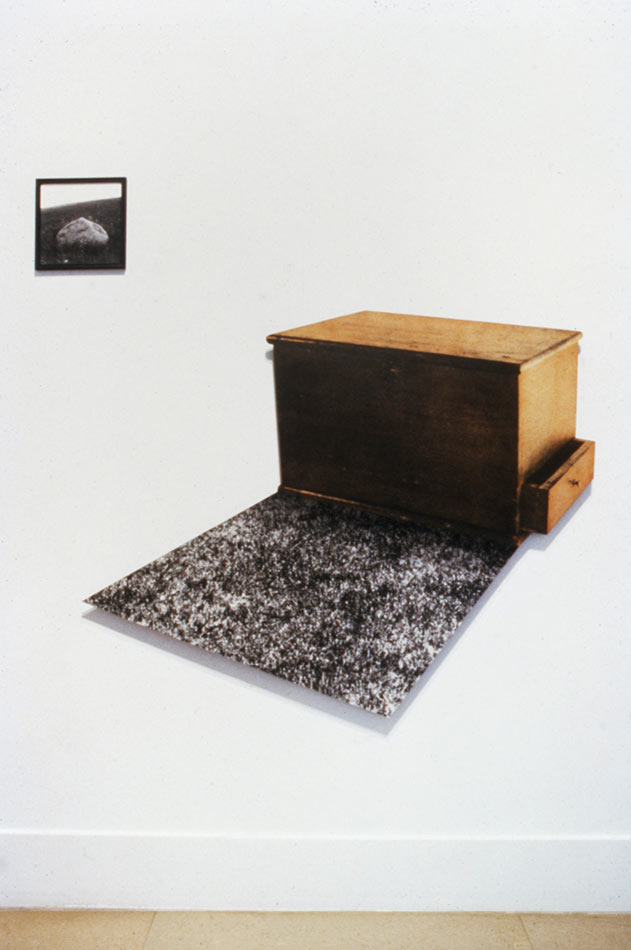

Installation view, "Eileen Neff"
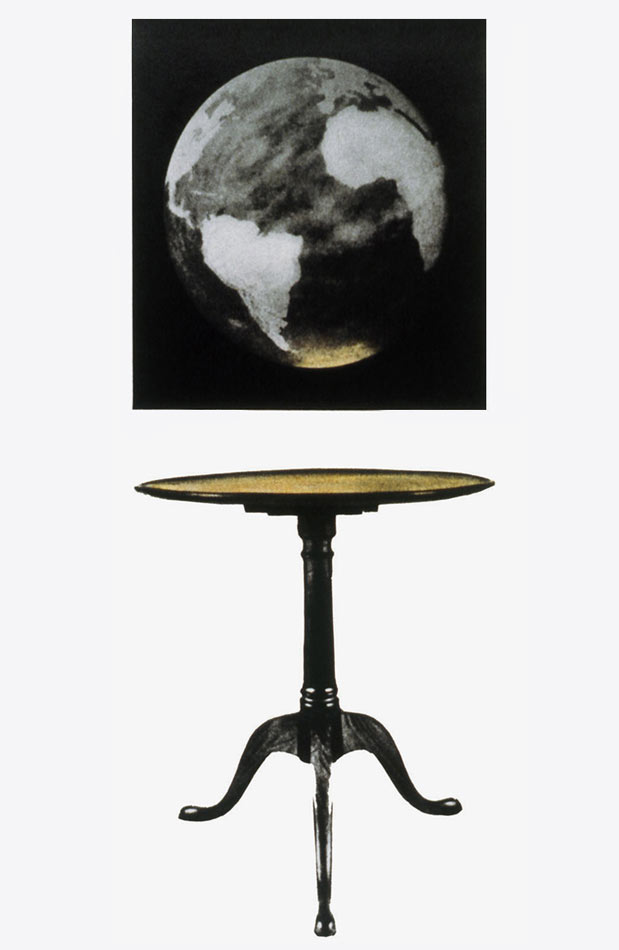

A Description of the World
oil on B&W photo cutout, 60 x 25 inches
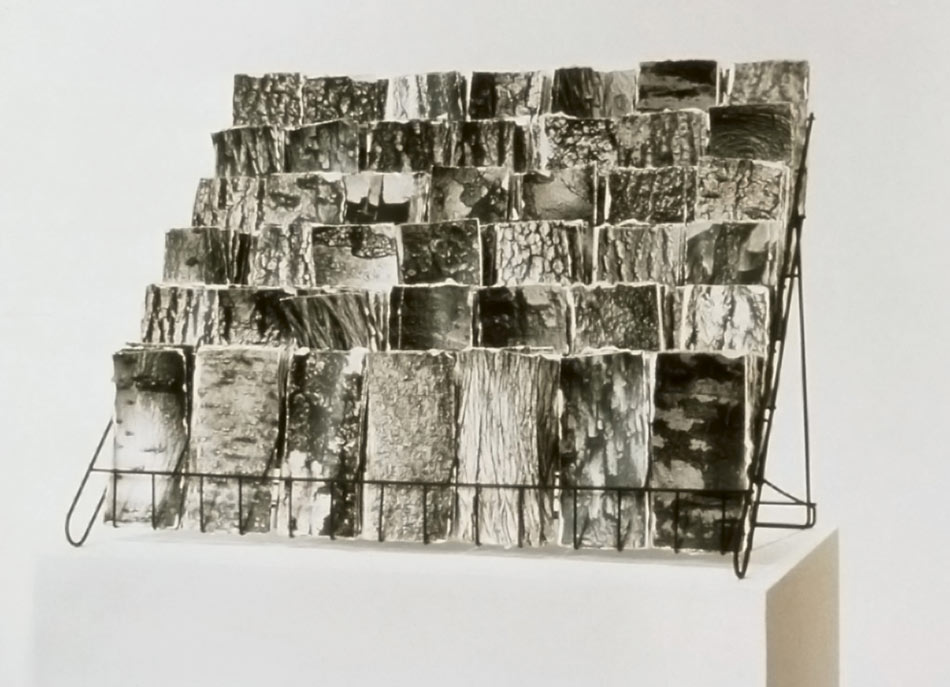

International Forest
378 B&W photographs, each 3 x 6 ½ inches
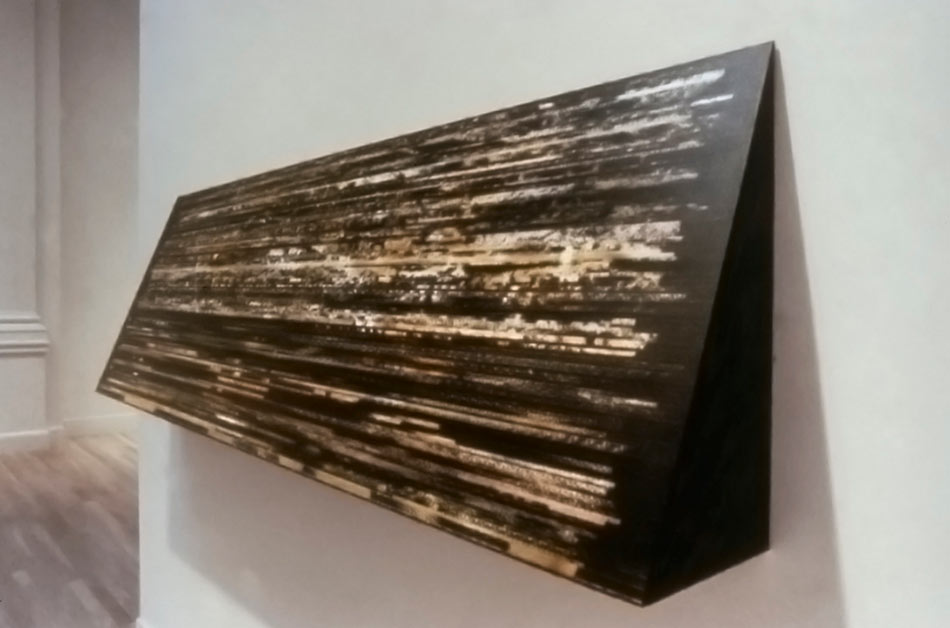

Another Angle
Oil on B&W photographic construction, 27 x 65 x 7 inches
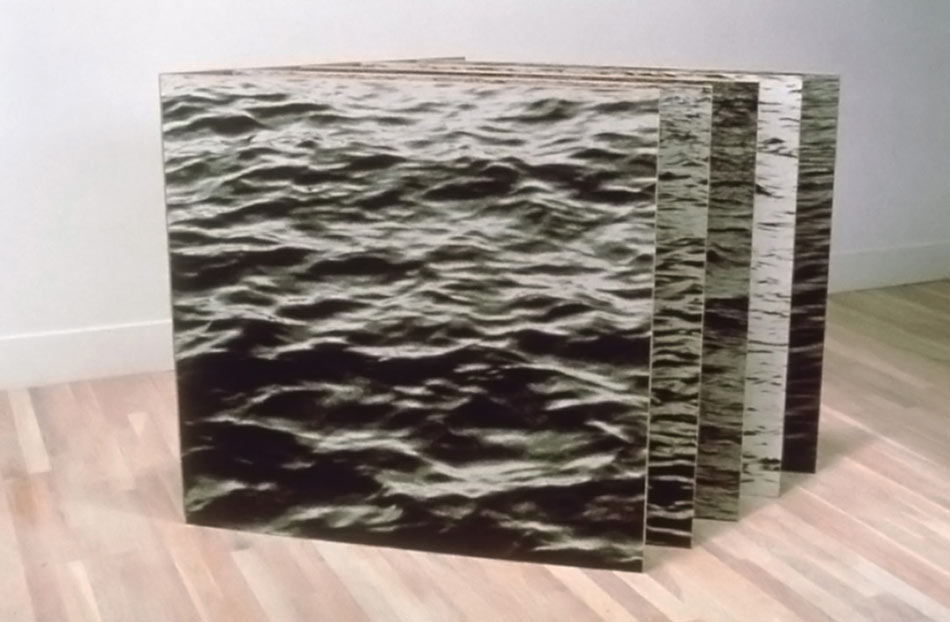

Five, for example
Five panels, B&W photographs, 39 x 60 x 37 ½ inches
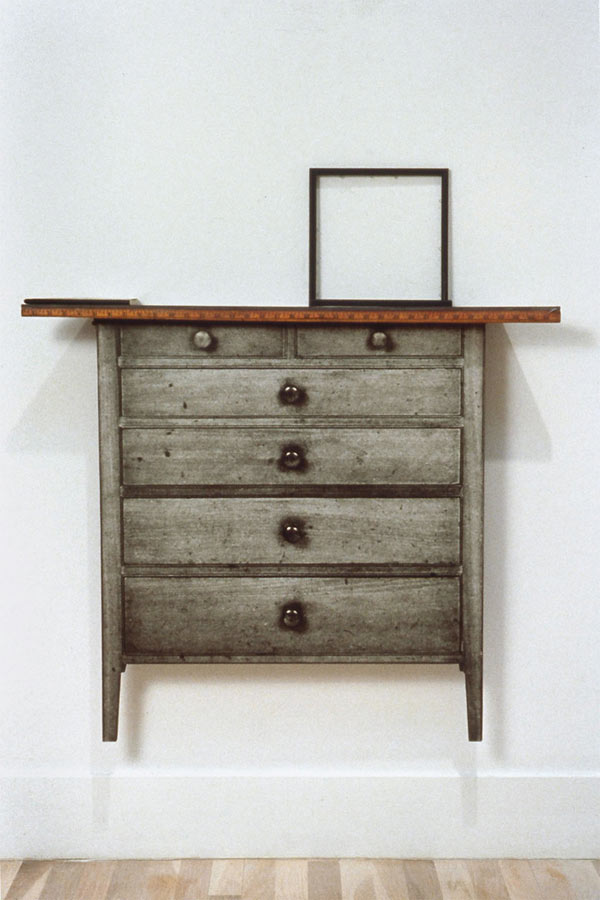

Before Fiction
B&W photograph, wooden frame, and book
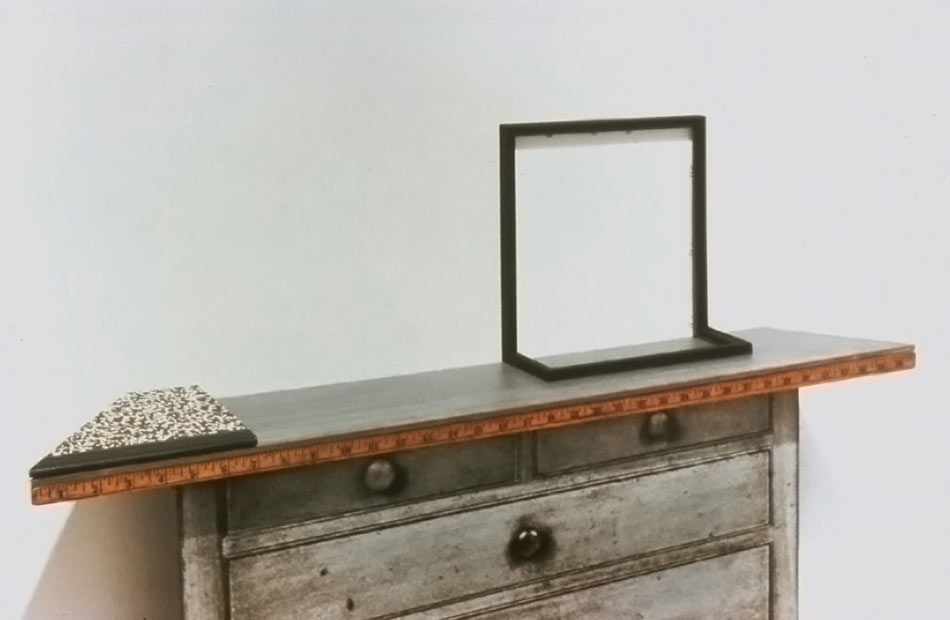

Detail, Before Fiction
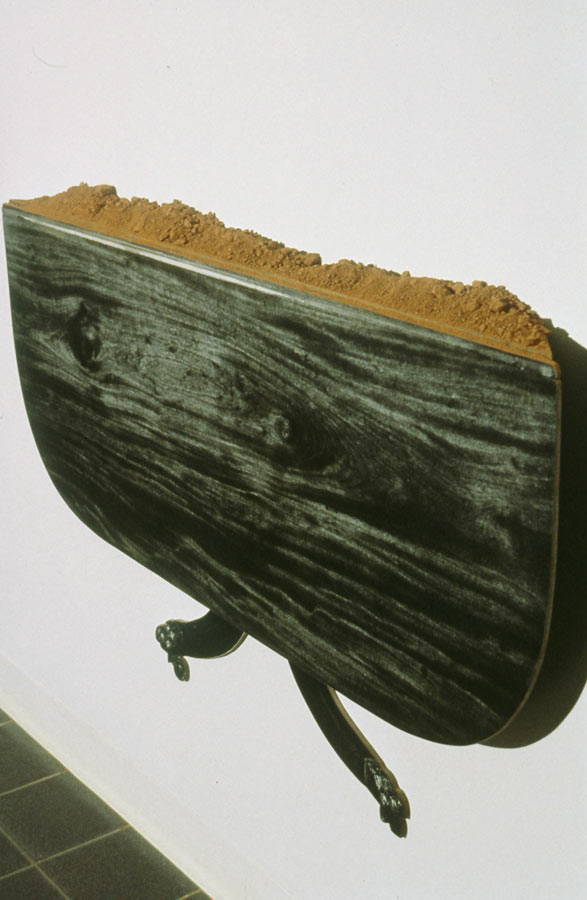

No Door
B&W photographic construction with soil, 45 x 47 inches
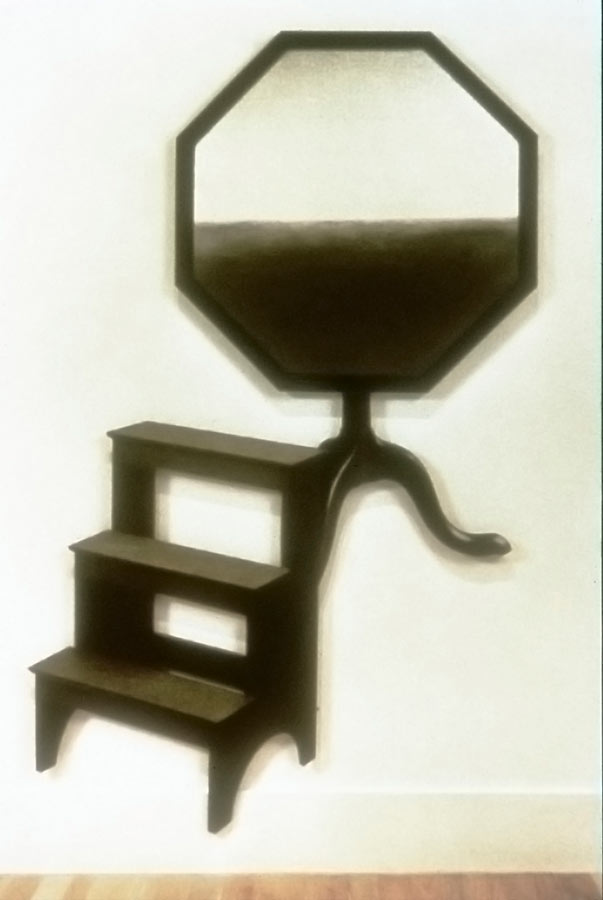

Anywhere Else
Oil on B&W photo cutout, 56 x 35 inches
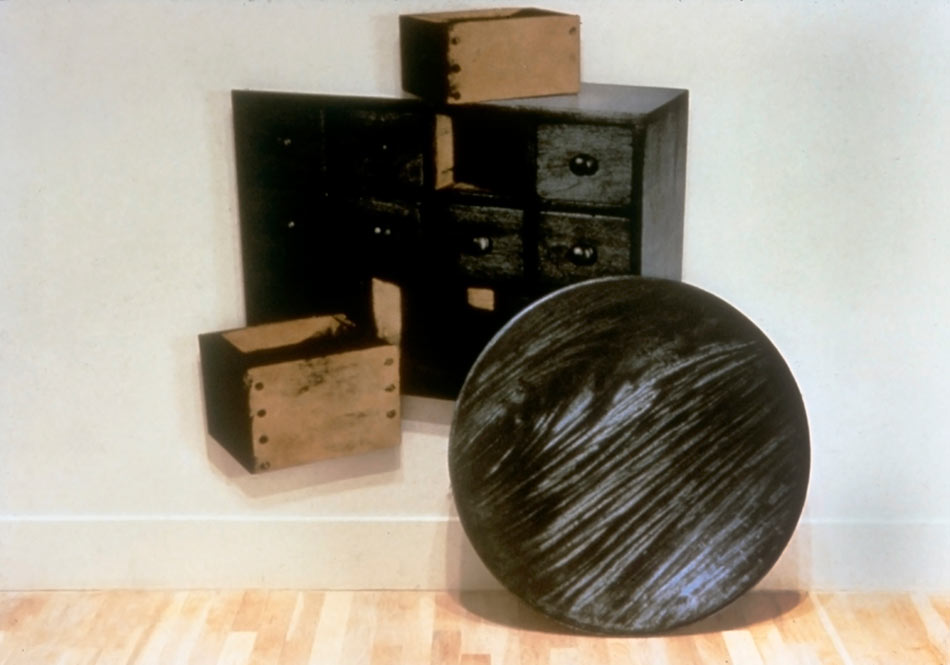

Blue Monday
Oil on B&W photo construction, 60 x 57 inches
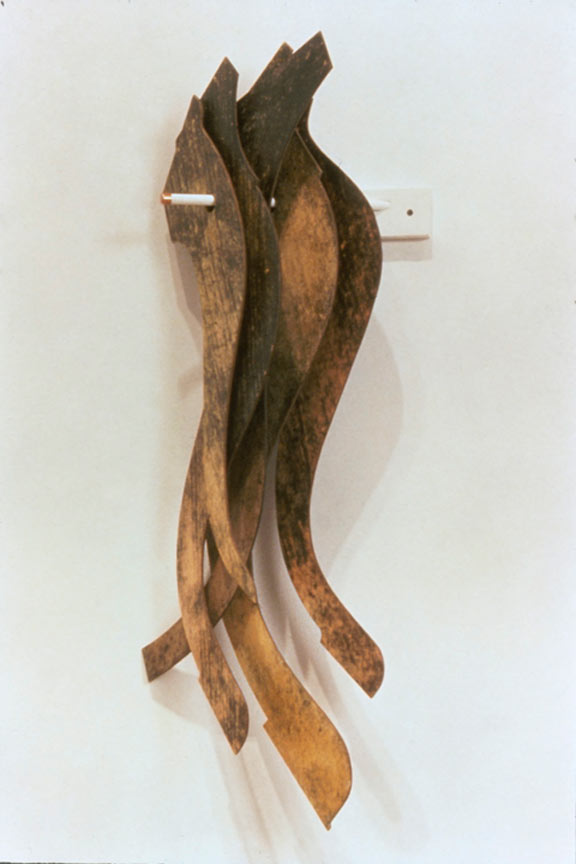

Thigh
Oil on B&W photo construction, 34 x 12 inches

